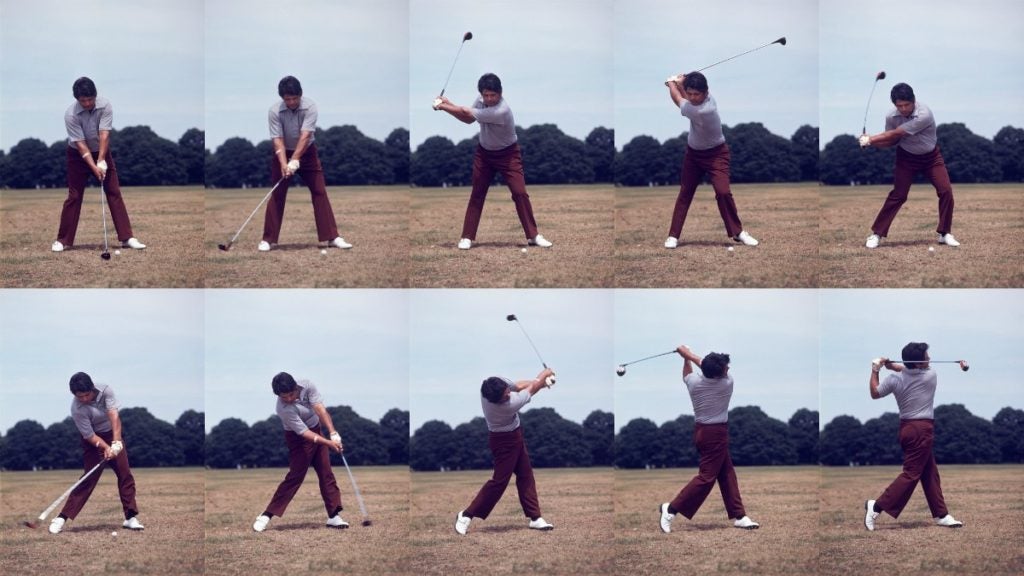I’m into the the heart of my second week in Dublin, OH and it certainly has been an eventful time of it, especially on the golf course. Indeed, the Workday Charity Open was a barnstormer and the duel down the stretch between Collin Morikawa and Justin Thomas was thrilling.
Off the course, things have been quiet for me. I have spent a lot of time in the hotel room, reading, watching TV, podcasting, and making appearances on CBS Sports HQ. Giving online golf lessons, via the Skillest App, has also kept me occupied, and there was one specific lesson that reinvigorated a debate that has raged inside my head for a long time.
At the center of the debate is a simple question: Is it easier to square the clubface at impact when the clubface is open at the top of the backswing, requiring it to close slightly? Or is it more effective to keep the clubface closed at the top of the backswing, and keep it from closing further through the swing.
It’s an important question to consider, because where the clubface is pointing at impact, along with the swing direction, will determine where the ball goes.
Personally, I like the idea of the ability to be able to slam the clubface shut on the downswing and through impact, without the fear of closing it too much and hooking the ball. To me that essentially reduces the tendency of a pulled shot and a two way miss.
Nowadays though, a number of highly respected instructors will argue otherwise and a number of leading golfers play from shut to open. To a certain extent I agree with this approach as the theory of reducing the rate of clubface closure through impact, and hence this approach has merit.
Ultimately, it all depends on what helps you get that clubface squared through the impact zone.
“Open-faced” golfers (where the toe of the clubhead is dangling more towards the ground at the top of the backswing) need to “sling” the clubhead through impact to square the face. “Closed-faced” players (where the clubface is pointing towards the sky at the top of the backswing) “hold” the clubhead through the impact area to achieve the same result.
Here are some examples of each:
Open to Closed
Notable examples: Ben Hogan, Webb Simpson, Phil Mickelson
- The lead wrist should be moving into flexion in the transition into the downswing;
- The lead hand should be moving into pronation (palm pointing toward the sky) through impact;
- The head should remain “back” and the eyeline should remain on the back of the golf ball;
- The rotation of the chest and shoulders should be a little slower and the clubhead should be accelerating “past” the body pivot through impact; and
- The wrist and forearms should “cross over” each other post impact.
Closed to Open
Notable examples: Dustin Johnson, Brooks Koepka, Lee Trevino, Viktor Hovland
- The lead wrist should not move toward Flexion in the transition;
- The lead hand should not pronate as much and the lead wrist should “raise” and remain ahead of the clubhead until after impact;
- The head and eyeline should rotate toward the target through impact;
- The body pivot should move more aggressively and lead the club through impact; and
- The trail elbow should remain more under the lead arm with less forearm crossover after impact.
Indeed both styles have their advantages and disadvantages, but the truth is that the most important thing is the ability to repeat whatever the chosen style is under pressure.
Finally, remember there is a point of diminishing returns to both methods. One can certainly be too open or too closed making it impossible to consistently square the club through impact.
All I can tell you for sure is that “one size does not fit all.”
